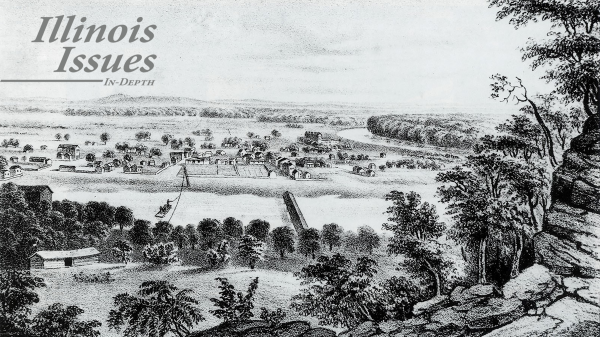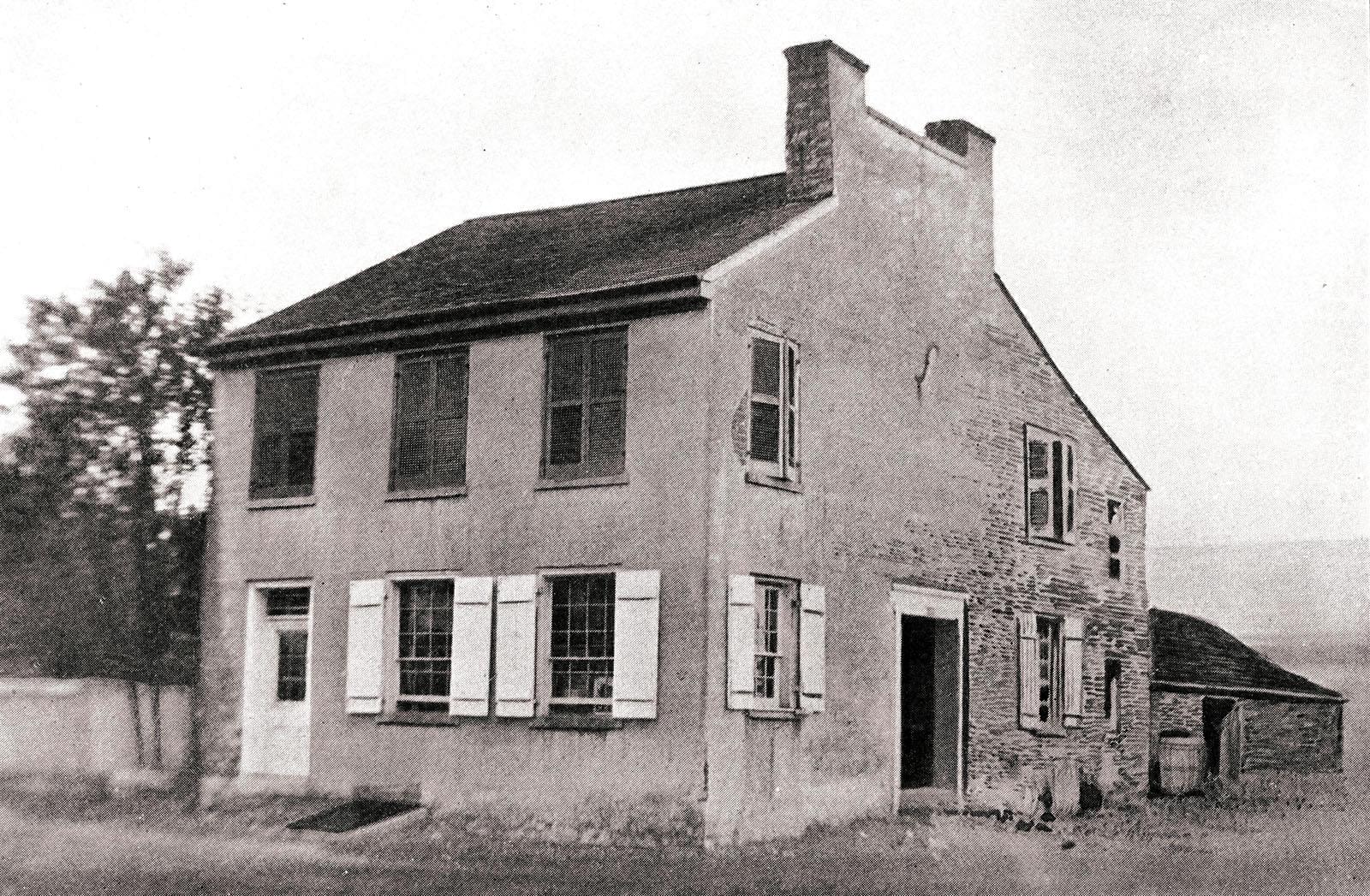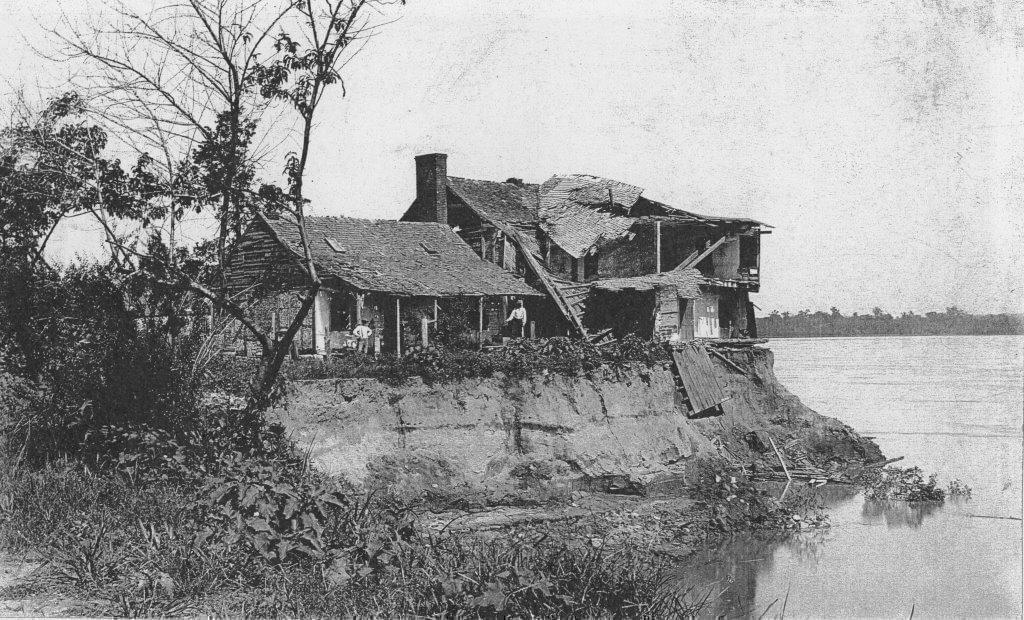Illinois Issues: Kaskaskia—The Lost Capital of Illinois

View of Kaskaskia, 1841. Lithograph by J. C. Wild, from J. C. Wild and L. F. Thomas, The Valley of the Mississippi Illustrated in a Series of Views (St. Louis: Chambers and Knapp, 1841). Southern Illinois University Press.
The authors have taken a fresh look at the story of Illinois’ first capital city in a new book published by Southern Illinois University Press called “Kaskaskia: The Lost Capital of Illinois.” They’ve put together what they say is a comprehensive account of the town, complete with historical photos, maps, and even tales of a centuries-old curse.
The following is a summary.
Kaskaskia became the capital of the Illinois Territory and then the first state capital of Illinois in 1818 and the town was home to leading political and economic figures in the early, shaping years of Illinois. Good fortune, however, did not long endure. Natural disasters of unprecedented magnitude plagued the town and robbed its vitality. People came to regard Kaskaskia, once the center and focus of Illinois, as just a quaint and somehow foreign relic.

Territorial and Statehouse.
The Mississippi River, so long Kaskaskia’s highway and source of its prosperity, turned on the town, washing away the buildings and even the very ground on which it was built. The changing course of the Mississippi was merely the coup de grâce, the finishing blow, the last of the disasters that led even reasonable people to wonder whether Kaskaskia had been cursed.
In the beginning
The Kaskaskia Indians and the Jesuit missionaries who accompanied them settled in 1703 at what became the town of Kaskaskia. In 1719, Kaskaskia divided into two communities, French Kaskaskia and, about three miles north, Indian Kaskaskia. The Jesuits felt the Indians would be less exposed to corrupting influences from rough voyageurs (boat men) and coureurs de bois (literally, "woods runners," a term for Indian traders and trappers, often operating illegally). Then, the French regime ended in 1765. The inhabitants of Kaskaskia in this era enjoyed relative prosperity despite the hostility of the Fox and Chickasaw tribes.
Kaskaskia went through difficult years of corrupt British rule, the conquest of the Illinois country by George Rogers Clark in 1778, and early years of neglect and inept rule by the United States. Repeated crop failures and the great flood of 1785 also plagued Kaskaskia at this time.
The town revived in the 1790s and again became the political and economic center of Illinois, serving as the territorial capital and then in 1818 the first state capital of Illinois. The town, however, was also beset by disasters during this period: some natural, some man-made like the loss of the capital to Vandalia in a corrupt political deal.
A disastrous year
In 1809, the federal government created the Illinois Territory, which included the area that became Wisconsin. Kaskaskia was the territorial capital, the residence of the governor and secretary, and the meeting place of the territorial legislature, all symbolic of Kaskaskia’s general revival, but progress was temporarily checked in the disastrous year of 1811.
The Great Comet of 1811, large, bright, and long-lasting, was widely believed to have foretold the disasters that subsequently engulfed Kaskaskia that year: a flood ravaged crops, a tornado leveled part of the town, and then, in late 1811 and early 1812, the fearsome New Madrid earthquakes damaged much of what was left.
Between 1820 and 1881, Kaskaskia suffered a long decline. There were bright spots, such as the visit of the Revolutionary War hero the Marquis de Lafayette in 1825, but also disasters, such as the destructive flood of 1844 and an epidemic that followed the flood. In the late 1860s, the Mississippi began to change course, and during the 1870s the river steadily ate away at the neck of land that separated it from the Kaskaskia River. The first break through occurred in the spring of 1881.
A changing river
In the mid-1860s, a silent change presaged the destruction of Kaskaskia: the Mississippi River began to shift its bed. In the thousands of years since the last ice age, the Mississippi had often changed course, but in the 19th century, human activity greatly magnified the power of the Mississippi to alter the landscape quickly. Prior to the 19th century, the banks of the Mississippi and the other large rivers of Illinois were lined with mixed deciduous trees and a thick undergrowth of brush and vines. The tangled vegetal mass slowed floodwaters, and roots anchored the soil.
The Indian and French populations were small and scarcely changed the riverbank vegetation except in a few small, scattered places. Then, in the 19th century, the population increased greatly. The settlers cut wood for cabins and for heating, fencing, and endeavors such as making salt, which they produced in large quantities on the small Saline River near its confluence with the Mississippi near Kaskaskia.
The side-wheel and stern-wheel steamboats played an even greater role in denuding the banks of the Mississippi. The wood requirements of the steam engines were enormous. Boats of average size burned 25 cords of wood a day, and the largest steamboats of the mid-19th century consumed three times as much.
Woodcutters bought permission from landowners to harvest the trees that lined the riverbanks.
They cut, sized and stacked the logs for sale to passing steamers, and after the wood in one area was exhausted, the woodcutters moved to the next. In Illinois, where the trees were often limited to a belt along the river, the stripping of the riverbanks was particularly severe. Trees and thickets of brush and vines no longer anchored the soil; riverbanks eroded and collapsed. The shape of the river changed, growing wider and shallower. Erosion was particularly severe at bends.
John Howard Burnham witnessed the beginning of the change that would destroy Kaskaskia. He recalled that when, as a member of the Union army he had traveled down the Mississippi in 1863, there was a good steamboat landing at St. Geneviève; but when he passed by on a steamboat in late 1867, “the river channel had then moved away from the town” and his boat grounded in shoaling water. “The current had shifted toward the neck of land that separated the Mississippi from the Kaskaskia River, and in the coming years the Mississippi rapidly ate away the bank north of Kaskaskia.’’
At first the Mississippi only flowed into the Kaskaskia River at flood stage, but the channel gradually grew deeper until the Mississippi took over the lower channel of the Kaskaskia River and began washing the old town of Kaskaskia away. By the end of the 19th century, little remained of the town, and the last substantial home fell into the river in 1907.

A building at Kaskaskia collaspes into the Mississippi.
New Kaskaskia
Much was salvaged ahead of the ravaging waters, and a new Kaskaskia was built about three miles from the old village. A new church was built of the materials saved from the old church, and within the church is the original altar from 1736 and other items from the French era. Beside the church is a building housing the bell sent by King Louis XV to the Kaskaskia church in 1741.
The courthouse originally erected in old Kaskaskia in 1815 was reconstructed according to the original plan in the new village where it served as a school. New Kaskaskia never grew beyond a small farming town, and repeated flooding over the years discouraged people who moved to more secure locations.
Two tales that first appeared at the end of the 19th and first years of the 20th century claimed that Kaskaskia was destroyed because of a curse, but the accounts are contradictory, one attributing the curse to an angry priest and the other to a murdered Indian. The stories are filled with gross inaccuracies and are revealed as journalistic fictions, although they do incorporate a few folktale elements amidst a forest of modern misrepresentations.
Today, only about 14 people live in the village. There are perhaps 60 more who live in farms in the vicinity. The change in the Mississippi's course has left new Kaskaskia and the surrounding land on the west side of the river. It is still part of the state of Illinois, but it can only be reached on roads passing through Missouri.

David MacDonald is a retired history professor at Illinois State University. Raine Waters teaches history at Heartland Community College.
Illinois Issues is in-depth reporting and analysis that takes you beyond the headlines to provide a deeper understanding of our state. Illinois Issues is produced by NPR Illinois in Springfield.

